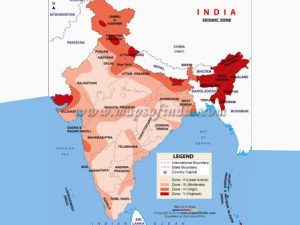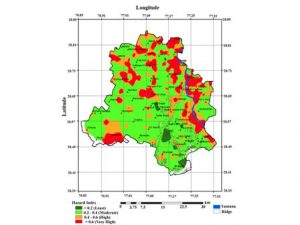Cannot Prevent Earthquakes, But We Can Minimize the Damage: MoES
Earthquakes cannot be prevented, is there a way out to mitigate the damaging effects of such earthquakes? Probably yes.

Uninvited it comes in and goes away with precious lives and properties or leaves one with virtually nothing! That’s how devastative high-magnitude earthquakes can get. The scary pictures of Uttarkashi (1991), Bhuj (2001), Japan (2011), etc. might still be fresh in the memories of many who got to witness them on TV sets in their homes. Unfathomable damage they can cause.
Although such earthquakes cannot be prevented, is there a way out to mitigate the damaging effects of such earthquakes? Probably yes, the Ministry of Earth Sciences (MoES) thinks so. Through seismic hazard microzonation of vulnerable areas and putting in place adequate mitigation measures, the Ministry believes that impact of high-intensity earthquakes can be reduced to a great deal. The ambitious project of MoES is aimed at seismic hazard microzonation of major Indian cities and areas falling under high seismic zones IV and V.
Earthquake-vulnerable areas falling in seismic zones IV and V include the entire North-Eastern states, Delhi, Kutch areas in Gujarat, and Andaman and Nicobar Islands.
As per the plan of the Ministry, seismic hazard microzonation of important cities having population of half a million is to be carried out in a phased manner. It includes capital cities of a few states and some other cities in vulnerable areas. Authorities believe that it would effectively help them having an idea about the sites, which are more prone to seismic hazards within a particular city and accordingly mitigation measures may be adopted for the safety of the common masses.
So far, micro-seismic mapping of Sikkim and eight cities (Bengaluru, Delhi, Kolkata, Guwahati, Jabalpur, Ahmedabad, Dehra Dun and Gandhidham) has been completed. Currently, work in four other cities – Coimbatore, Chennai, Bhubaneswar and Mangalore – is in progress. Micro-seismic mapping of Agra, Amritsar, Lucknow, Kanpur, Varanasi, Patna, Dhanbad and Meerut will be taken up soon after.
In the absence of a reliable prediction model for earthquakes, unlike in the case of Tsunamis, scientists believe that having well-thought and well-planned mitigation measures in place become more important.

“Predicting earthquakes accurately is not possible; though efforts are going on to develop a valid prediction model. But seismologists can provide seismic hazard microzonation maps which can effectively give an idea about the areas which are more prone to seismic hazards and accordingly mitigation measures may be adopted”, said Dr J.R. Kayal delivering NEIST (North East Institute of Science & Technology) Science Forum (NSF) Science Talk at CSIR-NEIST, Jorhat.
Also Read : Earthquakes Threaten The Entire Delhi Ncr At The Highest Level Muralee Thummarukudy
Japan is a leading example of how effective and well-implemented mitigation measures could make its citizens live in peace despite Japan falling in the high seismic zone and vulnerable to frequent earthquakes. Experts say that the civil engineering practice in Japan is fully compliant to seismic by-laws, where retrofitting of old and seismically vulnerable structures have been aggressively pursued and new structures are designed with seismic resilience.
India seems to be wanting in this direction. For having a successful mitigating measures in place, it is necessary to religiously adhere to building by-laws and retrofitting of structures should be aggressively taken up, particularly high rise buildings, bridges, hospitals, schools and other major infrastructure.
“We have been working on identifying high hazardous areas for quite some time and we are in the process of undertaking seismic hazard microzonation, i.e. mapping on larger scale for selected cities. The work has already been completed in eight cities and is in progress in some other cities. We are committed to developing mitigating measures for earthquake vulnerable areas and we are continuously working with other Government agencies to achieve the target”, said Dr B.K.Bansal, Director, National Centre for Seismology. (India Science Wire)
